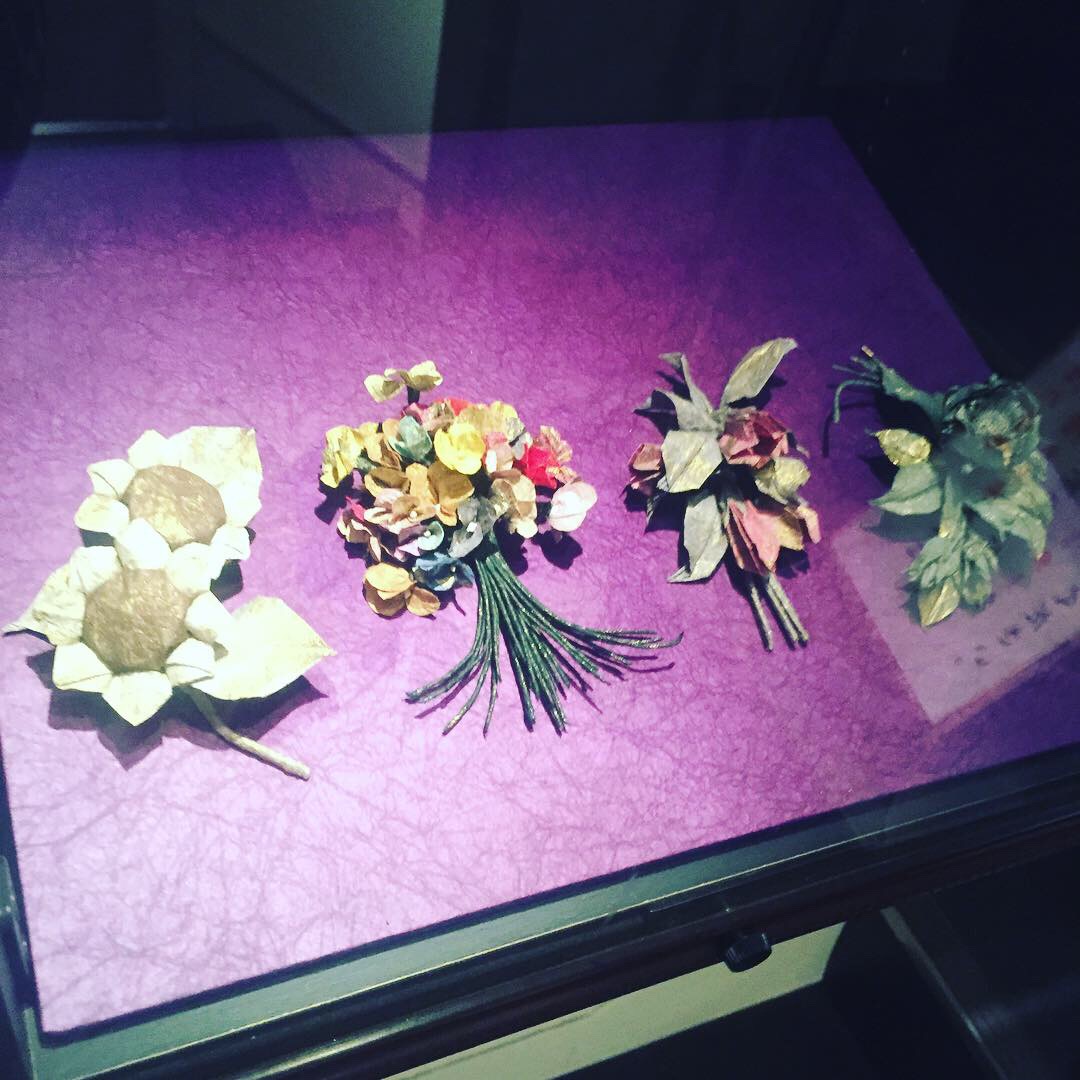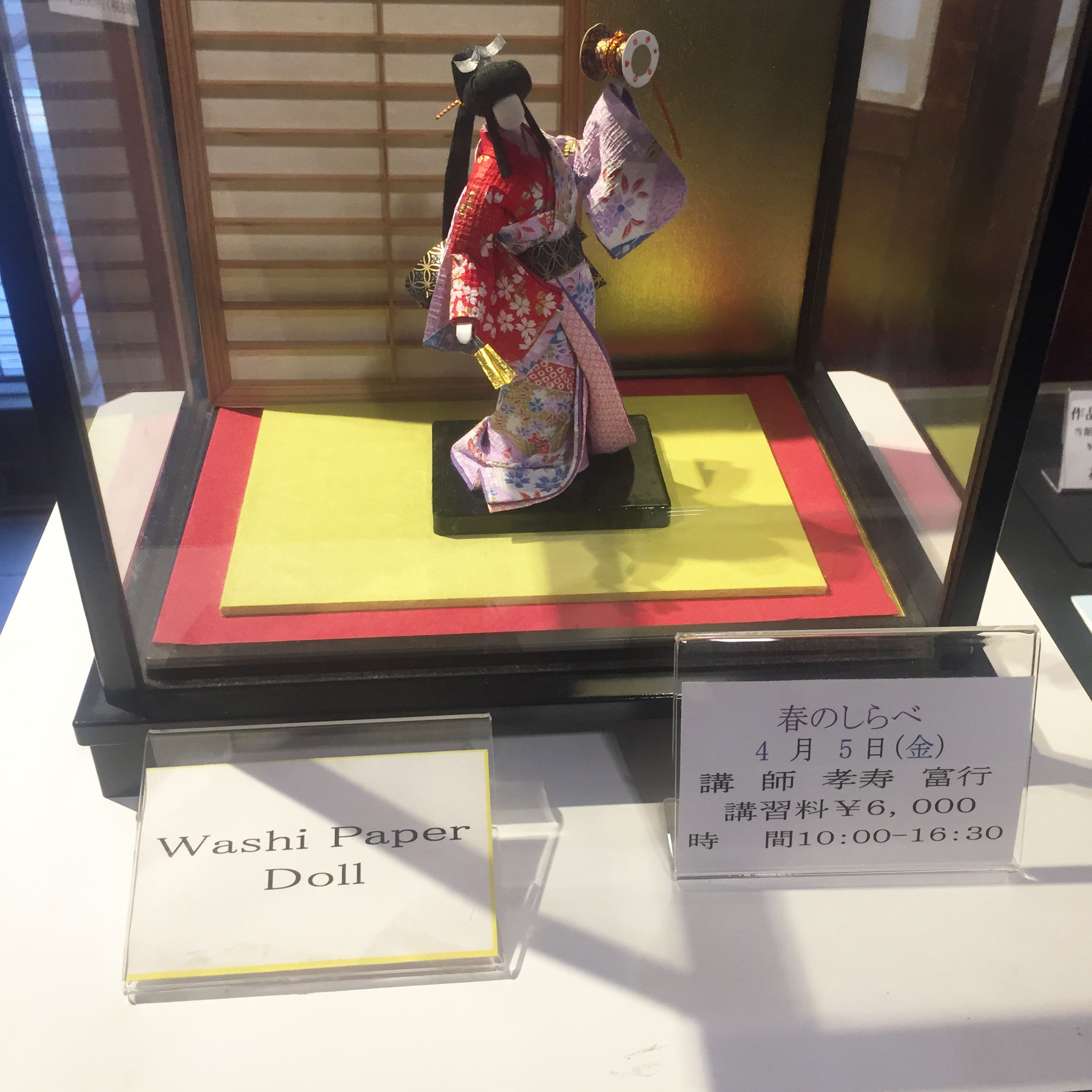Several floors of paper wonders and artistry await you at this amazing place dedicated to the art of origami! Not a far walk at all from Akihabara, and you’ll stumble upon a few shrines and temples along the way.
At first this tree looked like any other bonsai - upon moving a bit closer, you can see that a bouquet of painstakingly cut paper composes the tree.
All origami contain the magic of transformation. It’s a simple piece of paper, until suddenly, at the last fold, it’s a crane.
Like a magician releasing doves from her hat, watching someone make origami is transfixing and delightful - we are at the magic show to see the change, to see the unexpected.
Origami was much more difficult to master a few years ago, before the advent of Youtube. It would take an incredibly competent writer and artist to draw out and write out the steps to create a certain origami. If you were to memorize the steps of making a paper crane and then draw it out to someone, this is what most origami books did. The only other way to learn was possibly by watching a friend fold, and maybe your friend was a faster kinetic learner, better at comprehending directions, more exact, or just lucky.
Either way, with Youtube or without, origami is a surprisingly social art. There’s a showmanship piece to it, magical engineering moments. It’s fun to share origami with friends - for kids it is fun art about animals, and for adults there is elegance, craft, sweet technical moments akin to tuning an instrument or fixing a bike.
Now, it’s so easy to go onto Youtube and see a video of a person’s hands turning a piece of origami paper and folding it crisply and with the right side of the paper used from the beginning.
Like all art and design, failing at Origami happens all the time. Or at least I will admit it happens to me. A few years ago I bought a desk with pink trim at Ikea. It ended up bringing more of a building challenge than its pink trim promised. Though a small desk, it had several lovable compartments, and I ended up placing a key part on backwards and upsidedown, even after carefully reviewing the printed instructions.
Origami is similar - minor imprecisions stack up and affect the finished piece. Make one slightly imprecise fold in the beginning, and the work is harder at the end.
It’s still true that the earliest folds in any origami are the most important - a slightly misaligned corner-to-corner fold will create a crane with lopsided wings. You have to be patient and precise to get origami right. Successfully following a fold pattern takes at least a couple tries or careful diligence.
Paper flowers at Origami Kaikan.
One of the floors features a bestiary of paper creatures and plants. Each is labeled in Japanese and English, though it’s pretty easy to see what is what, the labels also help identify different styles of folding the same creature.
These papers in the Origami Kaikan shop were to just die for.
Origami Kaikan also has an amazing selection of handmade papers, and a papermaking studio on the 4th floor.
While at Origami Kaikan, myself and several other visitors were lucky to see a demonstration from origami master Kazuo Kobayashi, who folded this beautiful
The absolute best thing about Origami Kaikan is that you could tell every person in the building truly loved and was proud of their origami.
While patience helps me fold and it’s fun to uncover new patterns and papers, at this point in my origami journey, the idea of creating a new fold or a new origami creature sounds like the kind of task reserved for an emperor. Creating new ideas in origami must take a kind of talent that I can’t even imagine.
But that’s why Origami Kaikan is so cool - you get the feeling that both the Emperor of Origami and the kid who can fold paper frogs would like it here.
Related Blogs:

















